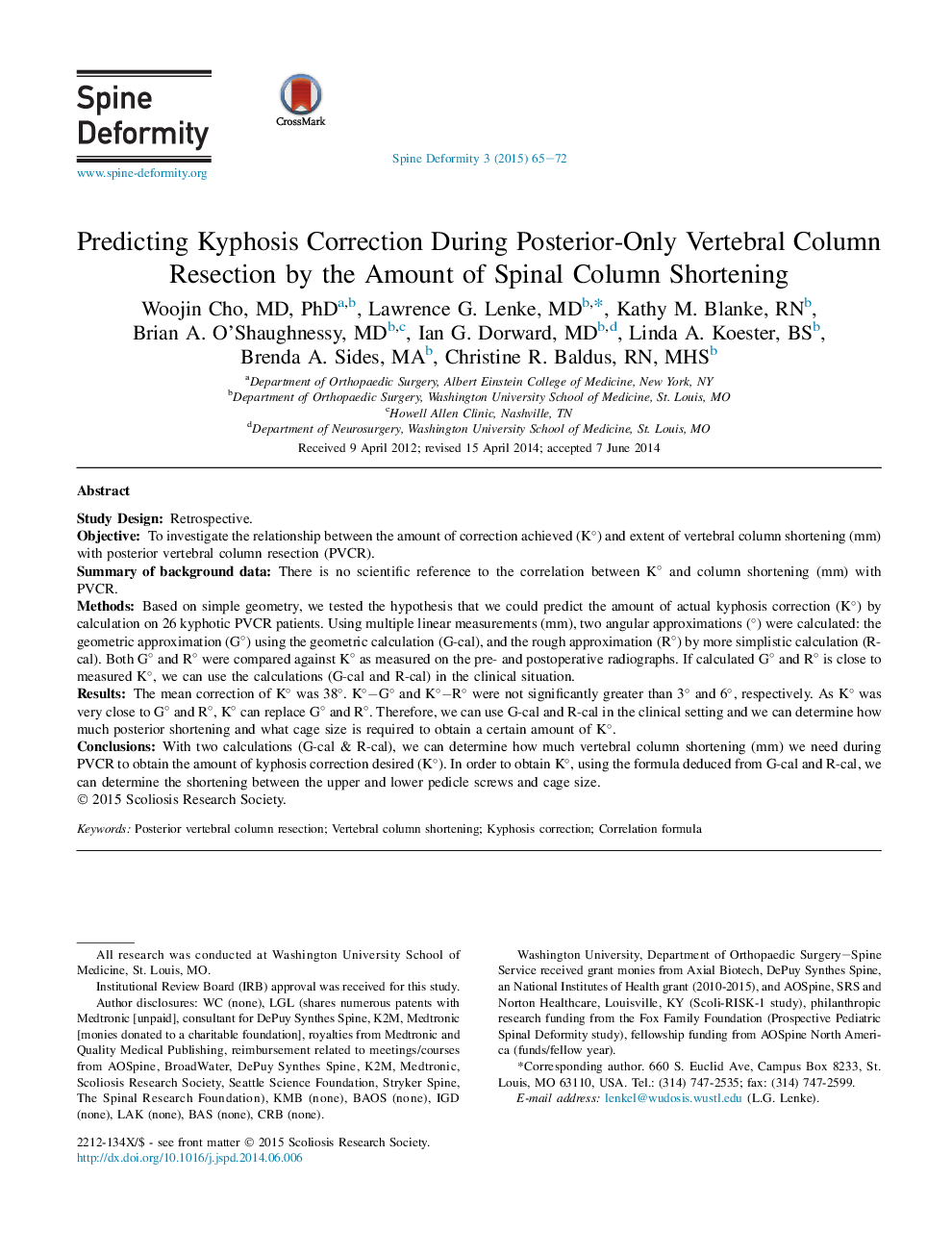| Article ID | Journal | Published Year | Pages | File Type |
|---|---|---|---|---|
| 4095236 | Spine Deformity | 2015 | 8 Pages |
Study DesignRetrospective.ObjectiveTo investigate the relationship between the amount of correction achieved (K°) and extent of vertebral column shortening (mm) with posterior vertebral column resection (PVCR).Summary of background dataThere is no scientific reference to the correlation between K° and column shortening (mm) with PVCR.MethodsBased on simple geometry, we tested the hypothesis that we could predict the amount of actual kyphosis correction (K°) by calculation on 26 kyphotic PVCR patients. Using multiple linear measurements (mm), two angular approximations (°) were calculated: the geometric approximation (G°) using the geometric calculation (G-cal), and the rough approximation (R°) by more simplistic calculation (R-cal). Both G° and R° were compared against K° as measured on the pre- and postoperative radiographs. If calculated G° and R° is close to measured K°, we can use the calculations (G-cal and R-cal) in the clinical situation.ResultsThe mean correction of K° was 38°. K°−G° and K°−R° were not significantly greater than 3° and 6°, respectively. As K° was very close to G° and R°, K° can replace G° and R°. Therefore, we can use G-cal and R-cal in the clinical setting and we can determine how much posterior shortening and what cage size is required to obtain a certain amount of K°.ConclusionsWith two calculations (G-cal & R-cal), we can determine how much vertebral column shortening (mm) we need during PVCR to obtain the amount of kyphosis correction desired (K°). In order to obtain K°, using the formula deduced from G-cal and R-cal, we can determine the shortening between the upper and lower pedicle screws and cage size.
